In the mid-1700s, our ancestors traversed cold and unrelenting lands across Northern Alberta. As one large group they travelled south, migrating for food, when they came across a large frozen lake. The Chiefs told everyone, “hurry across the ice.” “The ice is thin,” they said.
One woman was crossing with her child on her back, and he began to cry for an object sticking out of the ice. He wanted it for a toy. The woman kept telling him that the Chiefs were hurrying everyone across the ice, but the child kept crying. She relented and released the axe attached to her belt to begin chopping at the object. She cleaved and she hacked, and the object awoke as the horn of the Taslani, a dragon. An angered Tastlani broke through the ice, and the ice split. Many of our people died, and the rest were separated. The Tsuut’ina kept on their path south, while the Dene remained and returned north. If you visit the Xani-tii Guk’a Sidodi (Buffalo Lake, north of Edmonton) today, it is said you can still hear the people crying. — as told by Bruce Starlight
Present day, the Tsuut’ina Nation is located in the south west of Calgary.
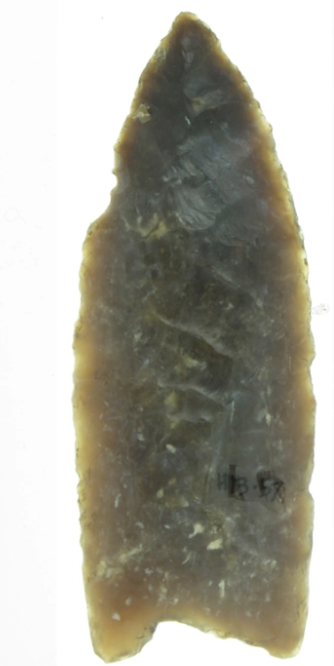
The Paleo-Indian stage. Fluted points dated to approx. 9570 B.P. were discovered by Sibbald Creek, close to Calgary, AB, most likely used to hunt Caribou.

Separation of the Beaver Tribe between north and south.
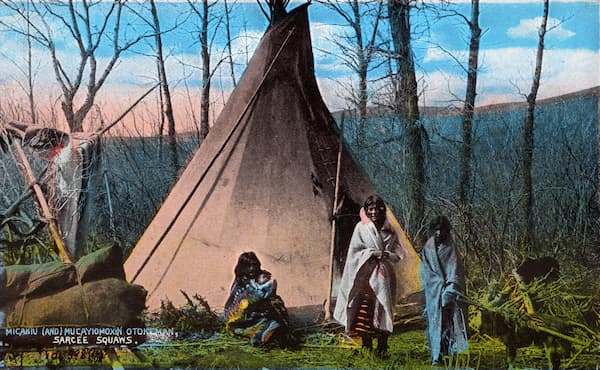
Tsuut’ina warriors go to Muddy Waters (Mississippi River) to steal horses. Broken Knife dies in Saskatchewan. Ancestors of Daisy Otter (Grasshopper) move camps to flee epidemic, leaving teepees and deceased relatives behind; the people move from Fort MacLeod to Fort Edmonton in search of food.
“Treaty of Pairs” is signed, assigning the Cree to the south of the Peace River and the Dane-zaa to the north.

Treaty 7 is entered into as a “Peace & Friendship Treaty” between the Chiefs of the Blackfoot Confederacy (Kainai; Siksika; Pikanii), Stoney Nakoda (Bearspaw; Chiniki; Wesley), and Tsuut’ina Nation
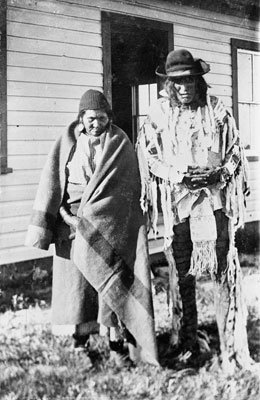
The Adhesion was signed whereby the Commissioners agreed to Chief Bullhead’s stance of our location of the Reserve.
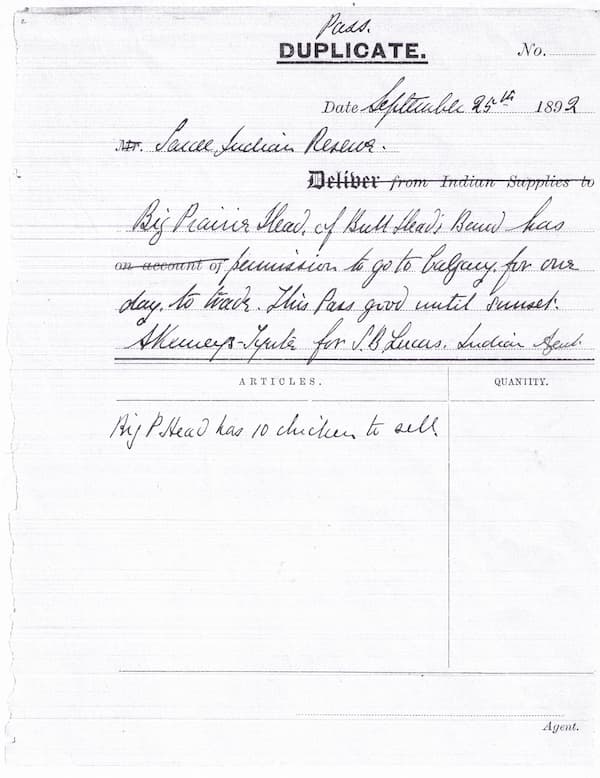
The Canadian Government puts a pass system in place, in what was said to be an attempt to quell the “rebellious Natives”, effectively segregating and imprisoning Indigenous peoples on their lands. Failure to procure said passes to travel or leave for trading purposes could result in arrest. Native peoples were often made to wait to attain one, sometimes causing spoilage of product. The pass system went on for over 60 years, making it difficult for Indigenous peoples to sell and trade or receive fair market value for their products. In 1951 the pass system is finally abolished.
First Residential School opens; eight Tsuut’ina boys attend. A wing is later added for girls. This school is later torn down and replaced by a three story school.
David Crowchild, Daisy Grasshopper (Otter), Katie Crowchild, Alice Crowchild, Harold Crowchild and Hilda Manyhorses attend residential school.
Chief Bullhead and headmen refuse to surrender land to the Federal Government: “We are of one mind not to sell or give up any of our Reserve. We don’t want to quarrel about it. The Reserve is just big enough for ourselves; the white men are bothering us to give up our land. The Treaty was made. We don’t want to sell.”
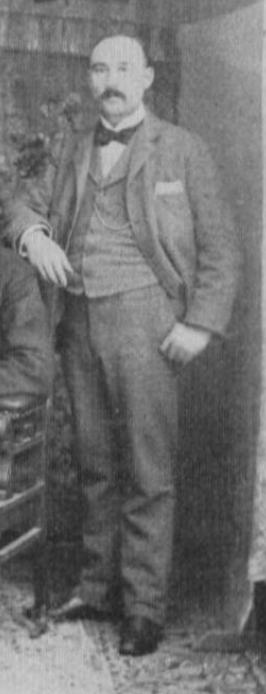
F.H.Paget, responsible for western accounts, was sent to investigate the Indian reserves and schools in Saskatchewan and Alberta. He reported Sarcee revenue of $2.00 annually from grazing cattle of settlers, cattle ranching, farming. Bullhead’s age and will cause the sale of land to proceed after his passing. Boarding school conditions are deemed to be because of low pupil attendance; the school is unfit for school purposes and needs a new school. Paget notes that pupils were clean and healthy despite labouring conditions to contend with; therefore, he cannot provide a favourable report.
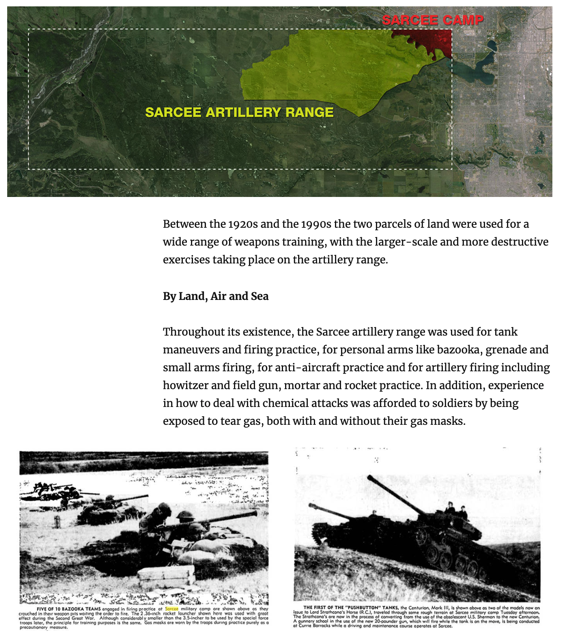
Land on the Tsuut’ina Nation (reserve) is used by the Military for the first time, over three days of summer training maneuvers.
Chief Bullhead passes away.
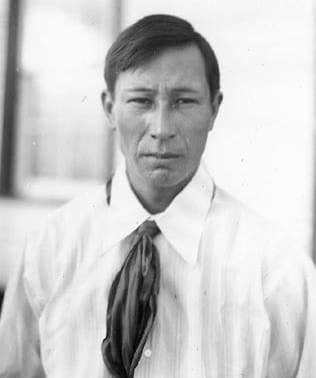
Oscar Otter, 1912.
World War I begins; Dr. J.V. Follett replaces L.D. McGill as Indian Agent. Lands are surrendered for grazing leases. A new boarding school is erected.
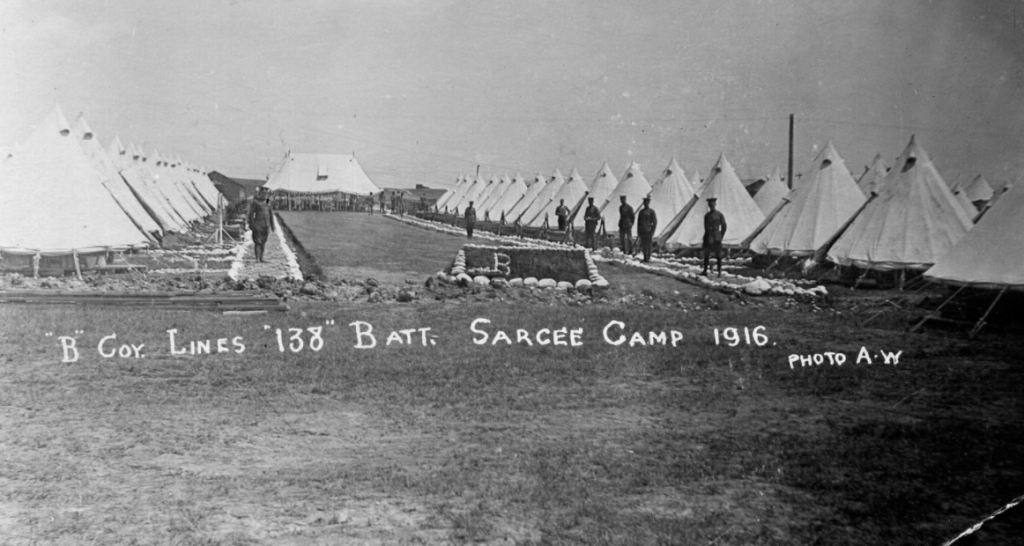
Camp Sarcee was established by the Canadian Military on lands leased from the Tsuut’ina Nation First Nation.
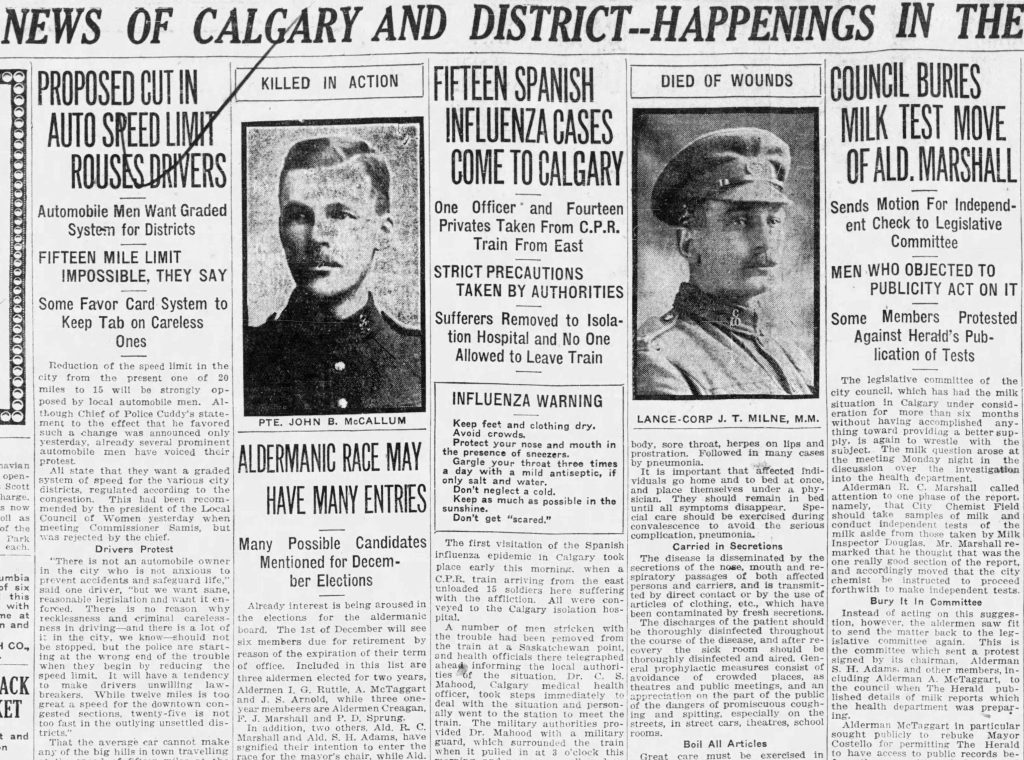
Spanish flu is spread across many tribes, mainly through the distribution of infected army blankets previously used by soldiers. As a result, the population is reduced to just 164.
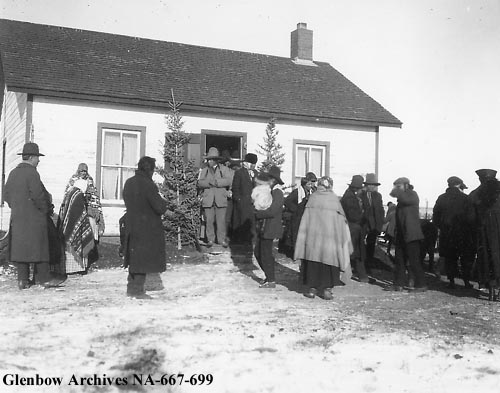
Chief Joseph Big Plume hosts the first community feast at Christmas.
Dr. Thomas Murray arrives to observe the school and, appalled at the conditions, mandates better food, separates the sick children from the healthy, and starts a vaccination program to rid the Reserve of tuberculosis outbreak. The Department of Indian Affairs agrees to a 100-year military lease on lands in the northeast corner of the Reserve. The previously unspoilt land is now deemed unsuitable for any use other than military training due to damages caused.
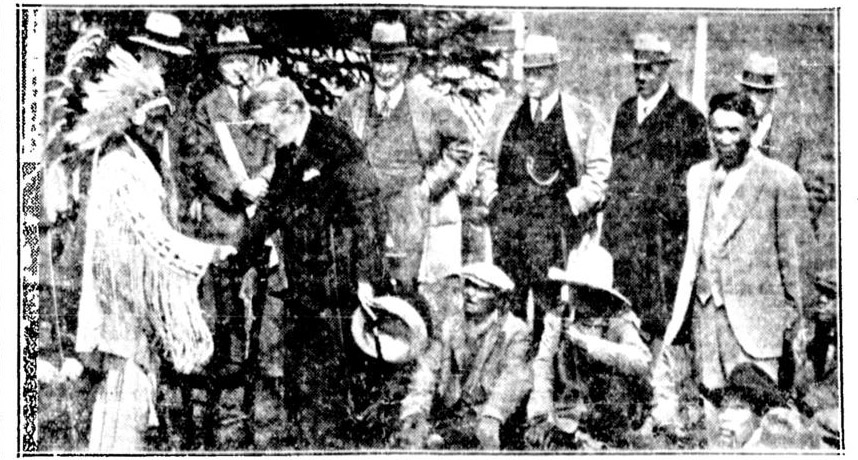
The Weaselhead – 593.5 acres of land surrounding the Elbow River – is sold by the Tsuut’ina to the City of Calgary to protect headwaters of the future reservoir for the sum of $29,675.
World War II begins. Harold Crowchild and Teddy Manywounds are enlisted overseas; Dolly Runner, Leonard Crane, and Fred Eagletail are in service.
Following a brush fire, Tsuut’ina Nation Elders notice the regrowth of poplar and spruce trees dawn a reddish hue. So they name this area, known now as Redwood Meadows, “Redwood Yard.”
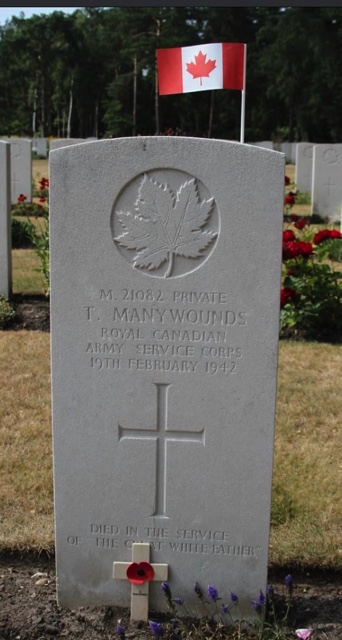
Private Teddy Many Wounds, RCSAC, died of pulmonary tuberculosis on 0245, 1942, in the Canadian General Hospital, Colehill, Warwickshire, U.K. He is buried in grave 36F6 of the Brookwood Military Cemetery, Surrey, UK.
War hero Harold Crowchild returns from Europe. But, as many First Nations enlisted, he is denied government benefits for refusal to enfranchise.
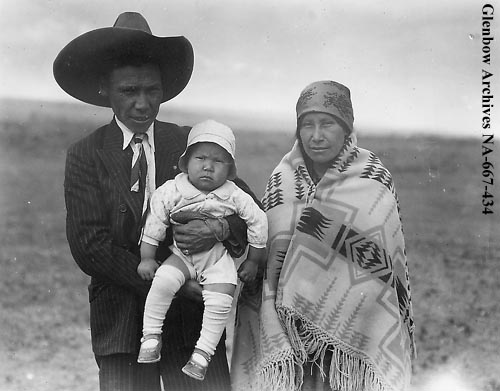
David Crowchild becomes Chief (1946-1953).
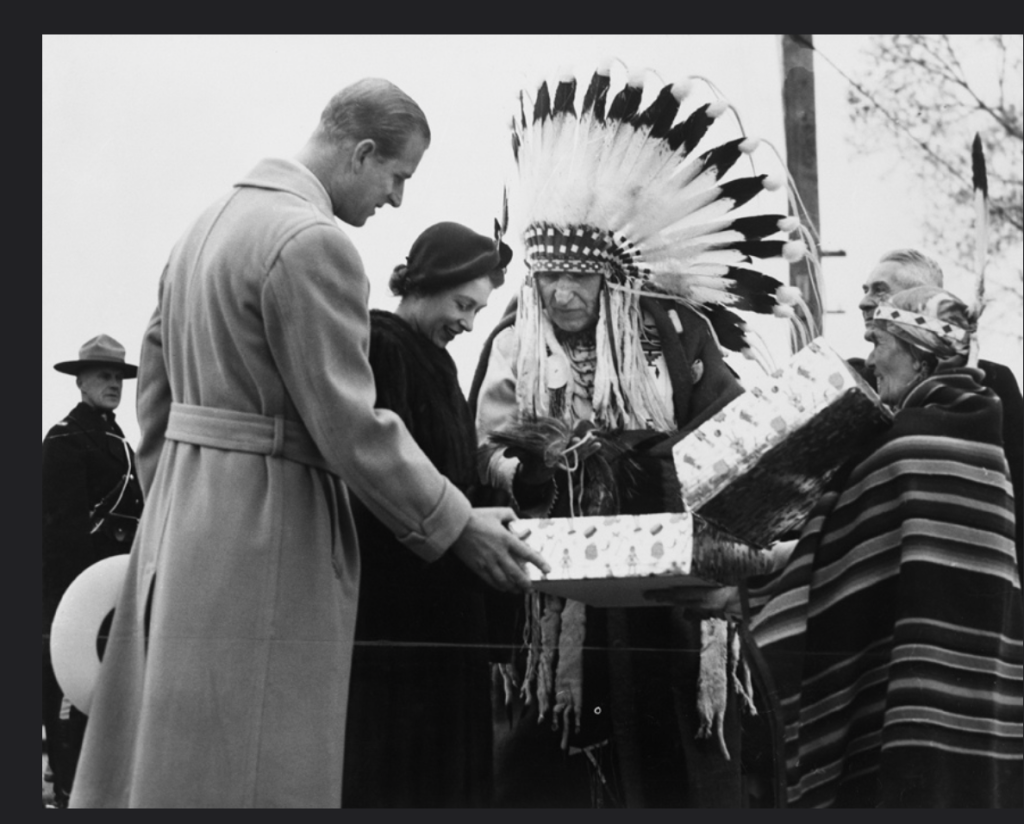
Princess Elizabeth and Prince Philip visit the Calgary Exhibition and Stampede Indian Village, Calgary, Alberta, and receive outfits for Prince Charles from Percy Creighton (Blood) and Mrs. Daisy Crowchild (Tsuut’ina).
The Canadian Military leases the 940 acres of land, defined by Glenmore Trail, 37th Street S.W., and Elbow River, to home the re-established Sarcee Barracks that opened in 1958.
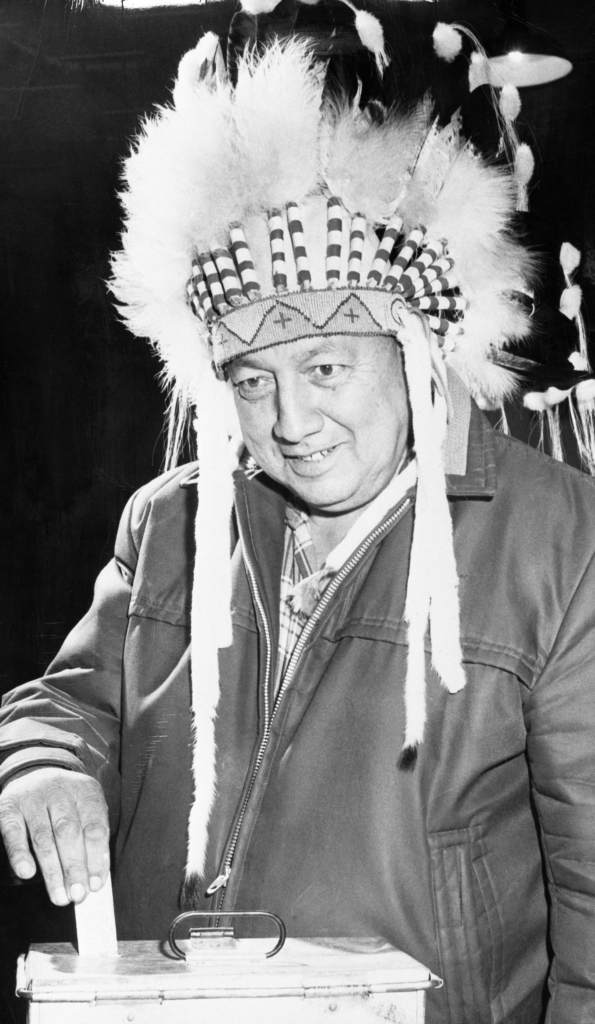
James “Jim” Starlight becomes Chief for his primary tenure (1953-1962).
The City of Calgary makes public their preliminary ring road plan, planned from 1952. The project includes an outer ring road that acts as a complete bypass around the city, in addition to two inner ring roads.
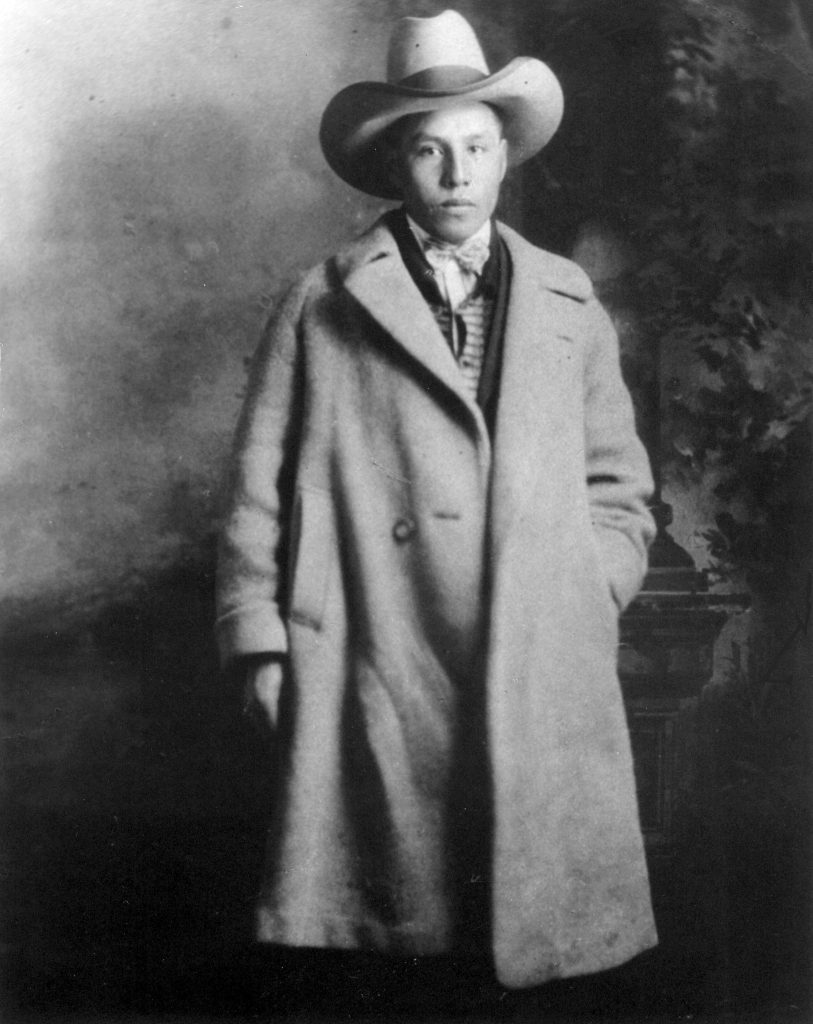
Dick Big Plume is elected Chief.
James “Jim” Starlight is elected as Chief for his second run (1964- 1966).
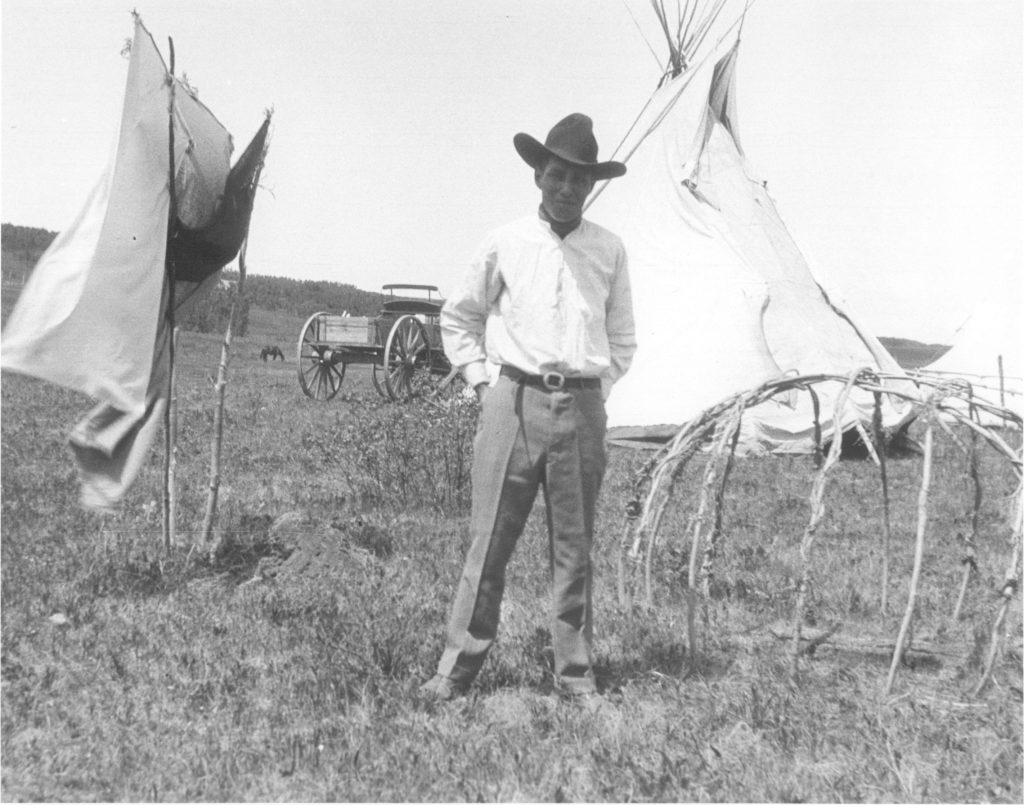
Dick Big Plume returns as Chief for his second tenure (1966-1970).
Local Government is formed. The role of the Indian Agent is abolished. Sarcee Administration (Chief Dick Big Plume) Building opens.
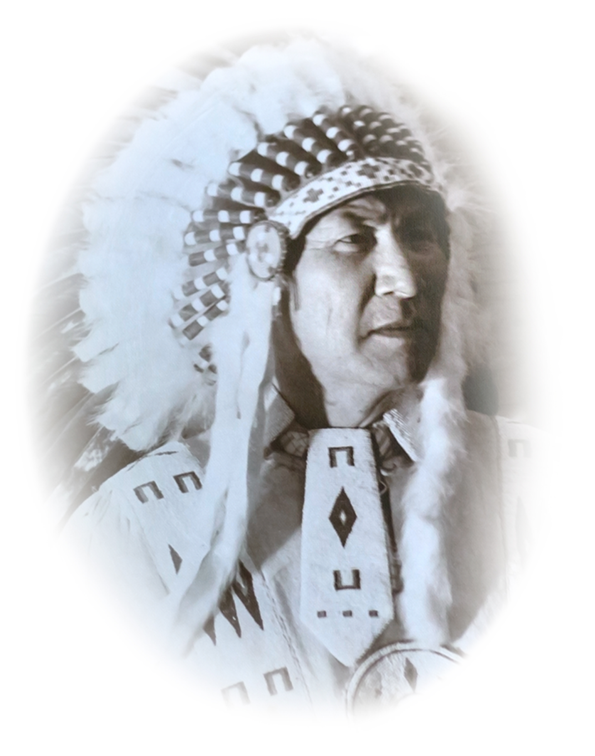
Gordon Crowchild becomes Chief (1970-1976).
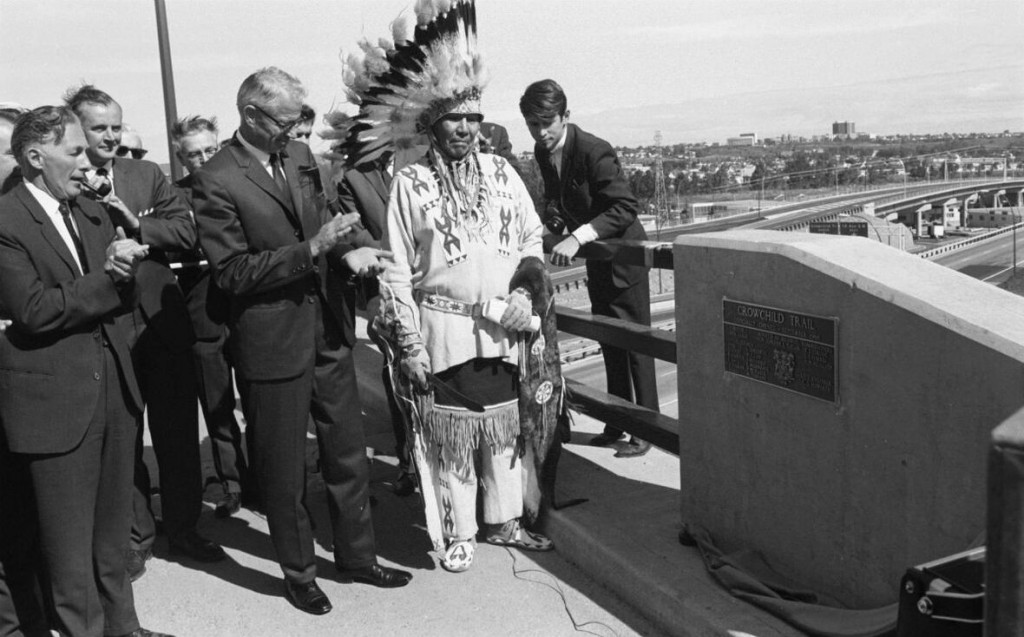
March – Crowchild Trail is opened and presented to David Crowchild with Jack Leslie.
The Tsuut’ina embarks on an economic endeavour to revitalize the Redwood Meadows area, including constructing an 18-hole championship golf course and residential development.
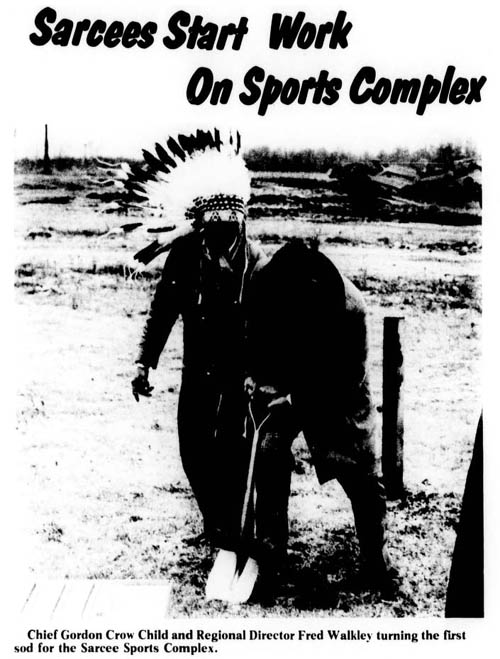
Sod turning begins for the Sarcee Sports Complex.
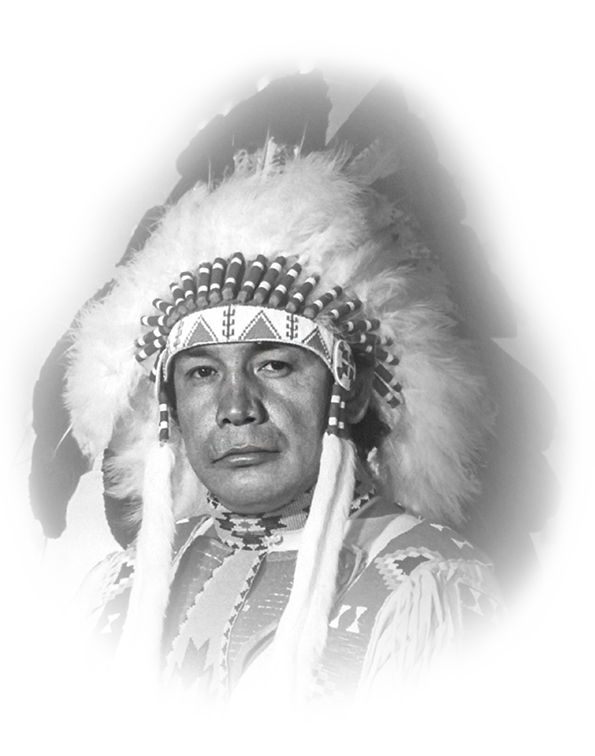
Clifford Big Plume is elected chief for his first run (1976-1980).
Sportsplex opens March 12. July 9 Prince Charles unveils the Chief Bull Head monument, is gifted headdress and attends the Blackfoot ceremony.
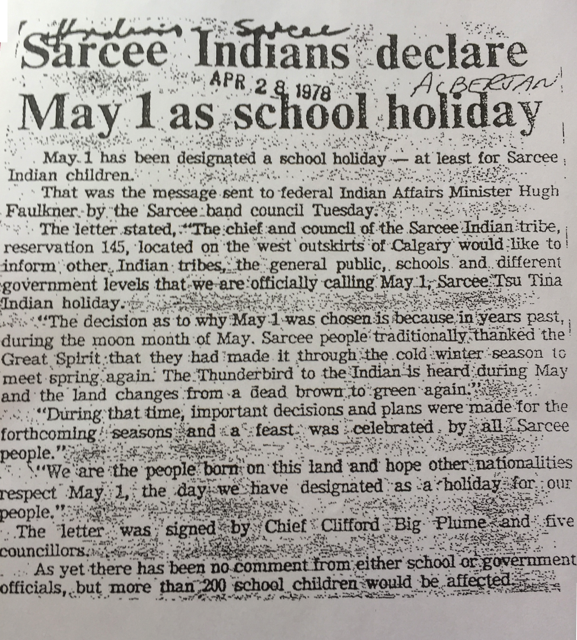
May 1 is designated Tsuut’ina Day, a holiday for the people. The date was chosen because, during this moon month, the people traditionally thanked the Great Spirit for the start of another life cycle following the winter’s end; essential decisions were made and celebrated with feasts and dances.
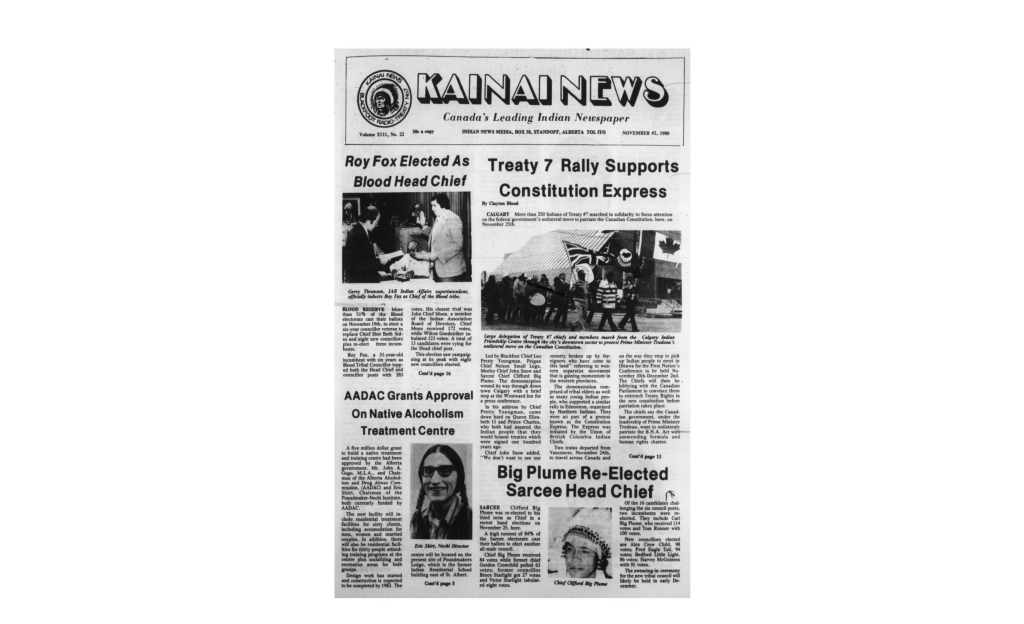
The City of Calgary purchases the 37th street right-of-way south of the reservoir, with the condition that Sarcee Trail is not built through the Weaselhead. Dick Big Plume returns as Chief.
The Military rejects the offer to re-purchase the northeast corner of the Reserve; the Military’s land lease on Tsuut’ina Nation lands is not approved for renewal, and the artillery rangeland is returned to the Tsuut’ina Nation after 60 years of Military use.
Tsuut’ina Nation celebrates its Centennial Powwow & Rodeo.
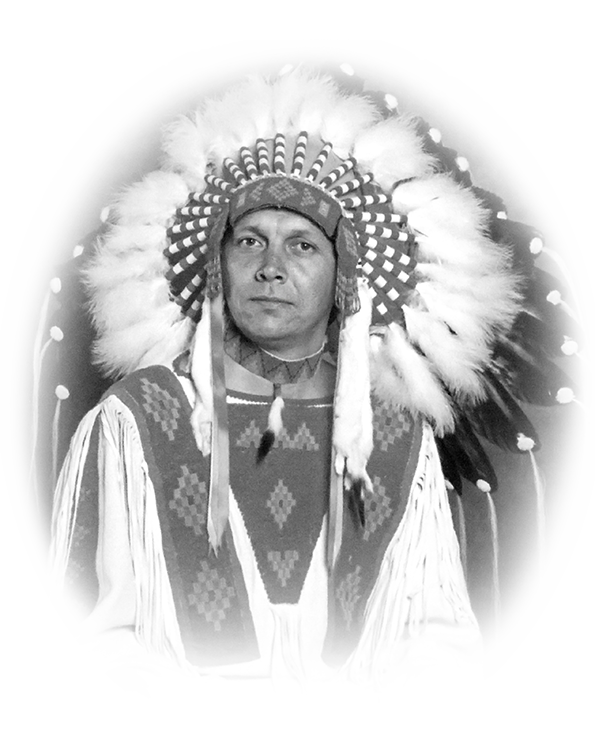
Roy Whitney becomes Chief for his first run (1984-1986).
Bill C-31, or a Bill to Amend the Indian Act, is passed into law. Tsuut’ina is one of two Reserves to decline its adaptation and adopts its own Citizenship Code.
Clifford Big Plume returns as chief (1986-1987).
Roy Whitney becomes Chief for his second tenure (1987-2001).
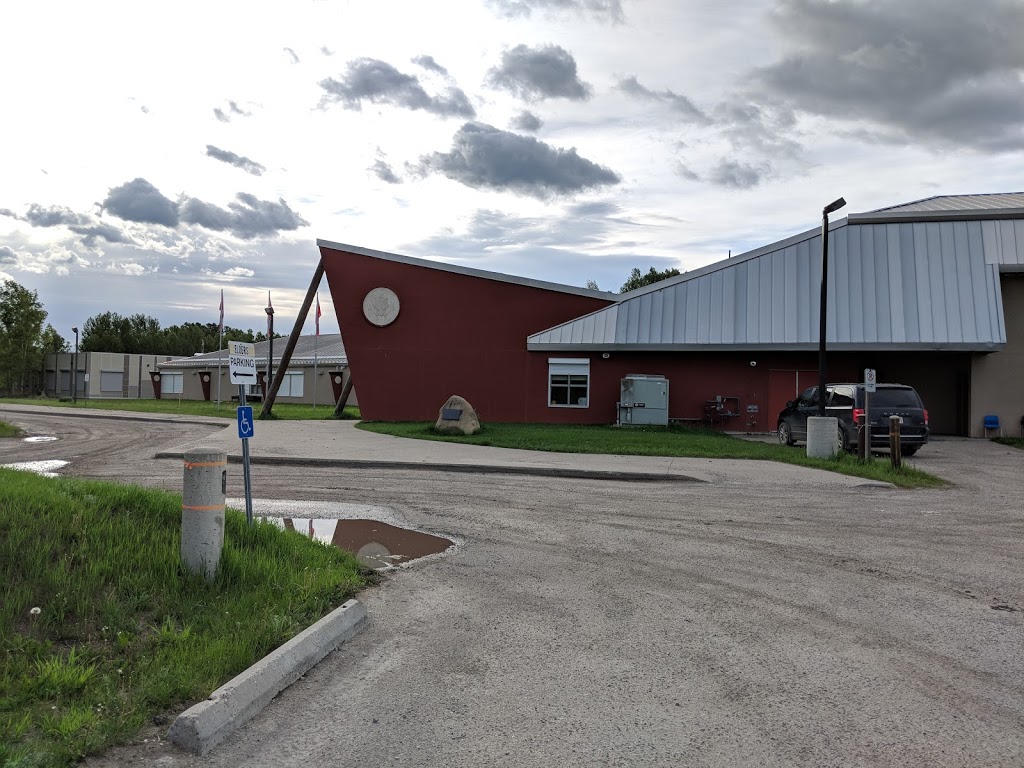
The Chilla School and Adult Learning Centre are open. Bullhead Hall burns down. The Tsuu T’ina Nation is officially named Tsuut’ina.
The Harvey Barracks land is returned to the Tsuut’ina by both the Military and the City of Calgary. The Harvey and Currie Barracks are decommissioned. Initial development plans for the land, including a casino, are made public for the first time.
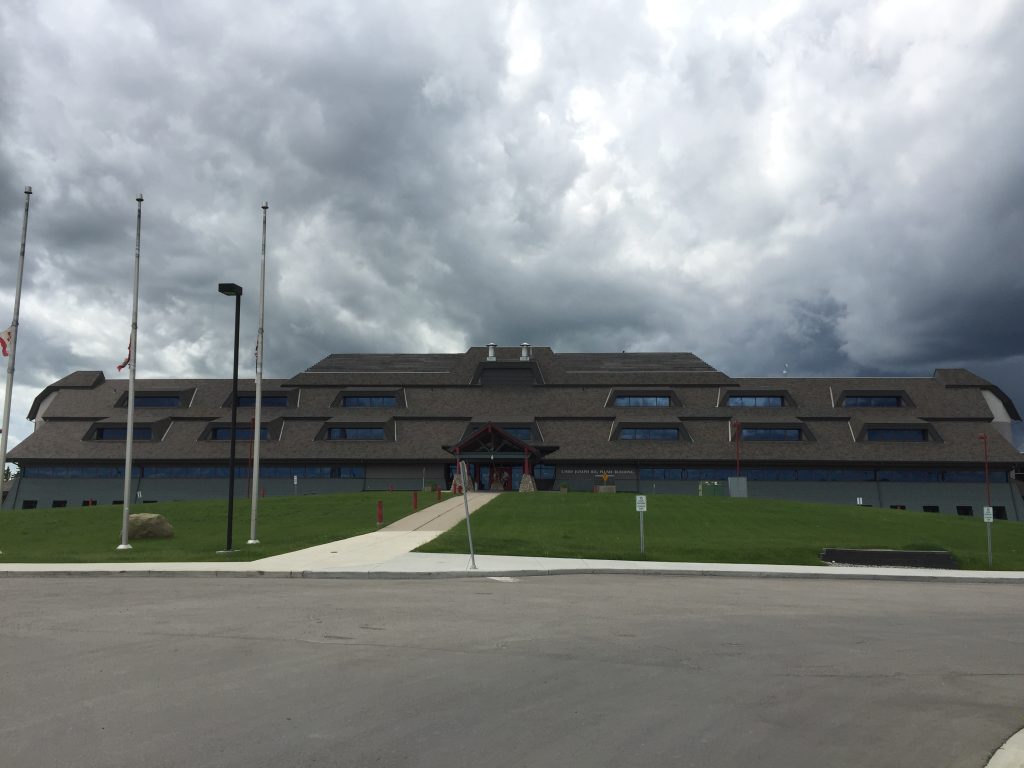
Chief Joseph Big Plume Administration building opens.
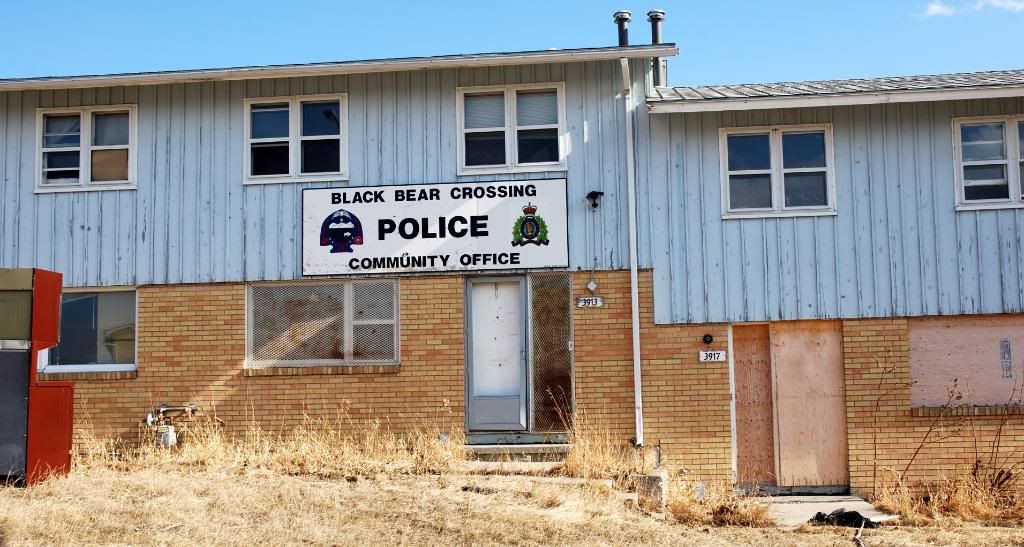
Roughly 800 Tsuut’ina citizens move into the 180 vacant housing units of the Barracks’ Black Bear Crossing (B.B.C.) As a result, the Department of Defense relinquishes control over the area.
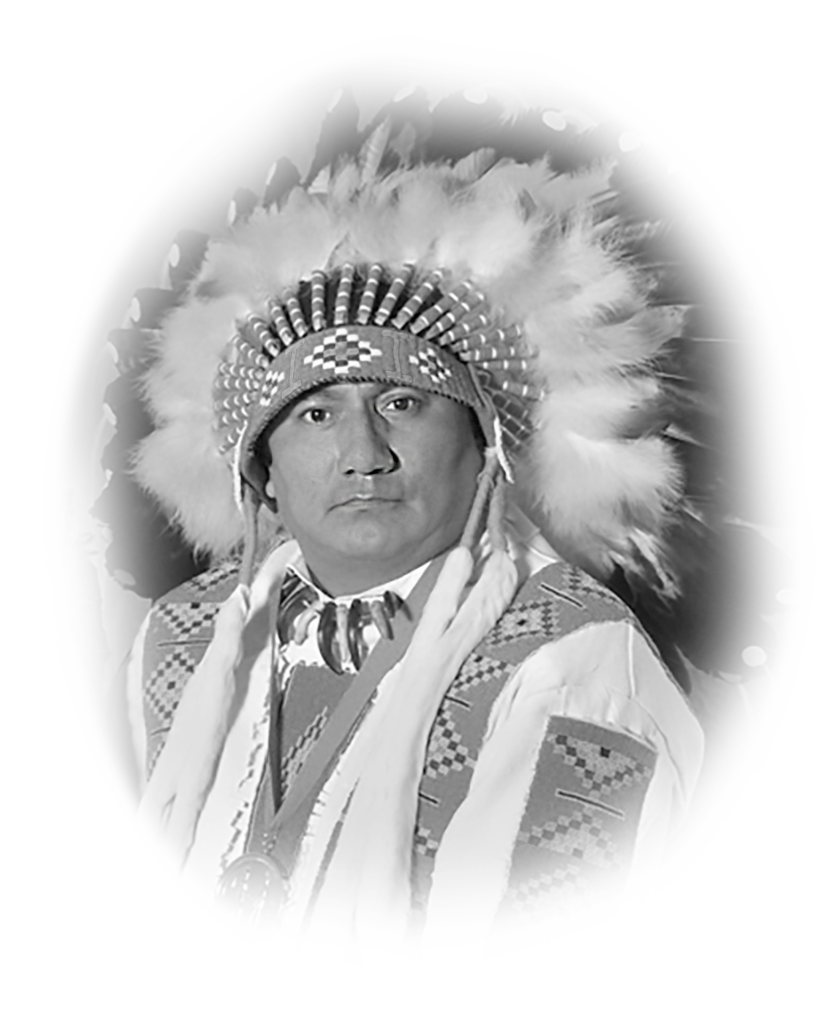
Sanford Big Plume takes the role of the chief (2001-2012).
December 31 Chief Dick Big Plume passes away.
Chief Sanford Big Plume and Premier Ralph Klein sign an Agreement in Principle to build the S.W. portion of the ring road through Tsuut’ina Nation, with the province purchasing and retaining control of the right-of-way.
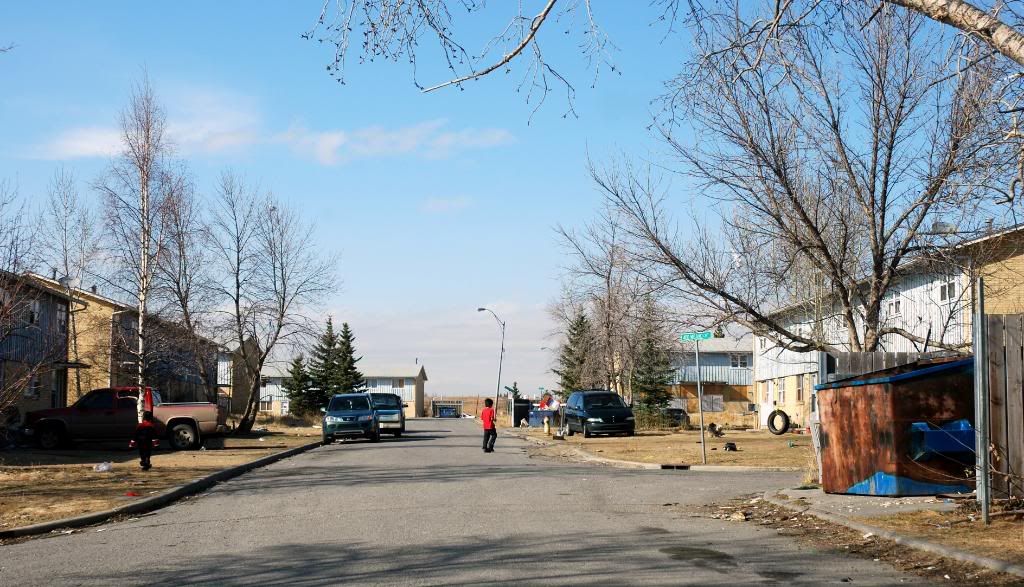
Black Bear Crossing is deemed inhabitable due to asbestos, evacuation is ordered, and units are demolished.
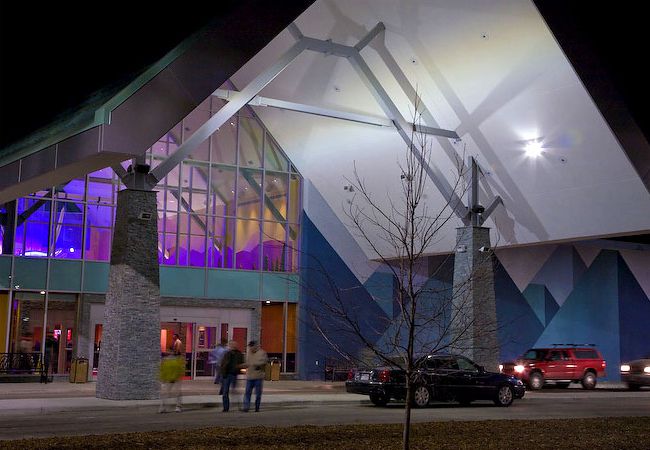
The Grey Eagle Casino opens.
The Tsuut’ina celebrates its 125th anniversary. Then, the North Sarcee townsite opens, and citizens begin moving in.
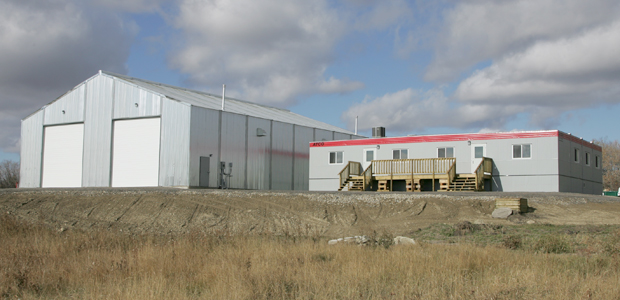
The Fire Hall opens.
June Adult Citizenship Vote takes place. Chief Roy Whitney is elected for his third tenure (2012-2016).
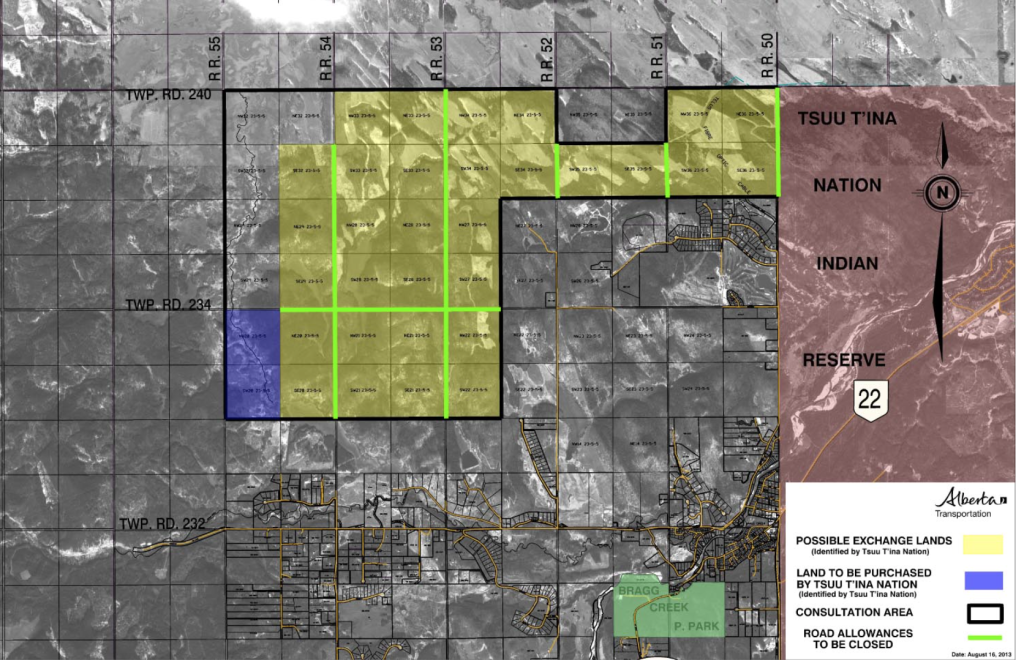
Xakiji Whitney signs the Ring Road Agreement with the Government of Alberta, signalling the completion of a road plan over 60 years in the making.
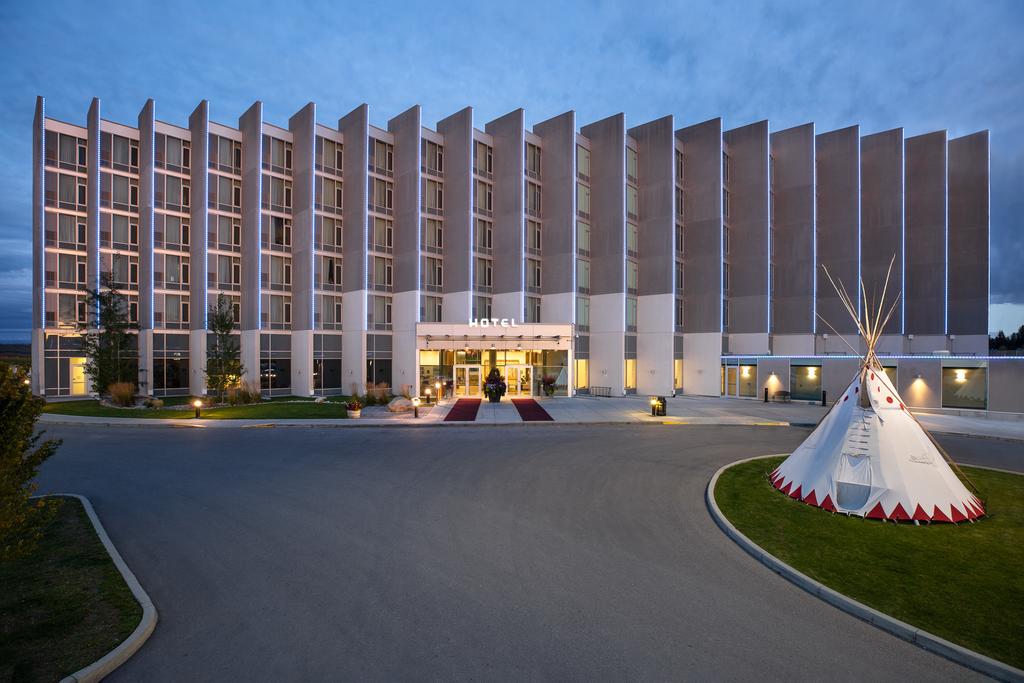
The Grey Eagle Hotel and Event Centre, as well as the Chief David Crowchild Building, open. June – Tsuut’ina citizens vote to initiate a high-level Economic Development Master Plan that outlines the strategy to designate approximately 1,200 acres along the eastern border for significant commercial development that will have direct access from the Southwest Calgary Ring Road when it is completed.

January 12 Chief Gordon Crowchild passes away. Canderel is Selected as Masterplan Development Partner by Tsuut’ina. Tsuut’ina Nation notifies Canada that it is seeking a referendum in June 2016 to amend the current designation in addition to proceeding towards a land code.
March 5 Prime Minister Justin Trudeau visits Tsuut’ina Nation and is given a Headdress. March 12 new Chief Dick Big Plume opens. June 21 new Bull Head Hall opens.
The partnership with Canderel is announced publicly as part of a long-term vision to create educational and employment opportunities on the Nation to allow generations of Tsuut’ina Nation citizens to work and flourish, right at home. Taza Development Corporation (now Canderel MDC) is created to execute the development on behalf of the partnership.
Alberta Transportation officially announces the southwest leg of the Ring Road as ‘Tsuut’ina Trail’ on July 11, 2017 in recognition of Tsuut’ina Nation ancestors and the hard work they put into the land; land known for significant cultural foundations, cultural identity, and spiritual connections.”
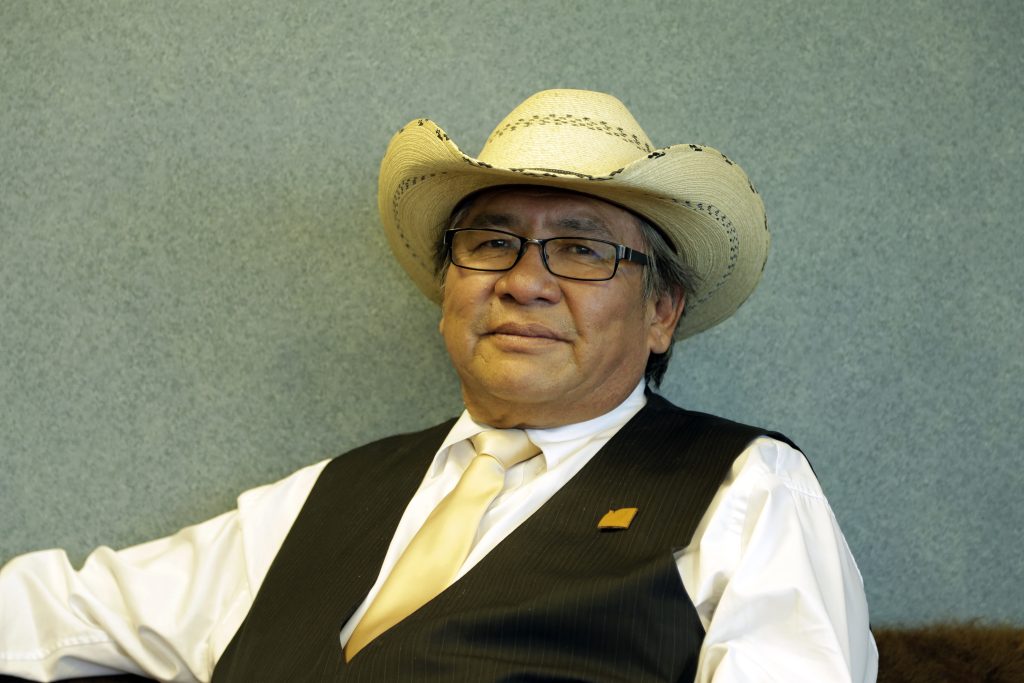
Sydney “Lee” Crowchild is elected chief (2016-2019).
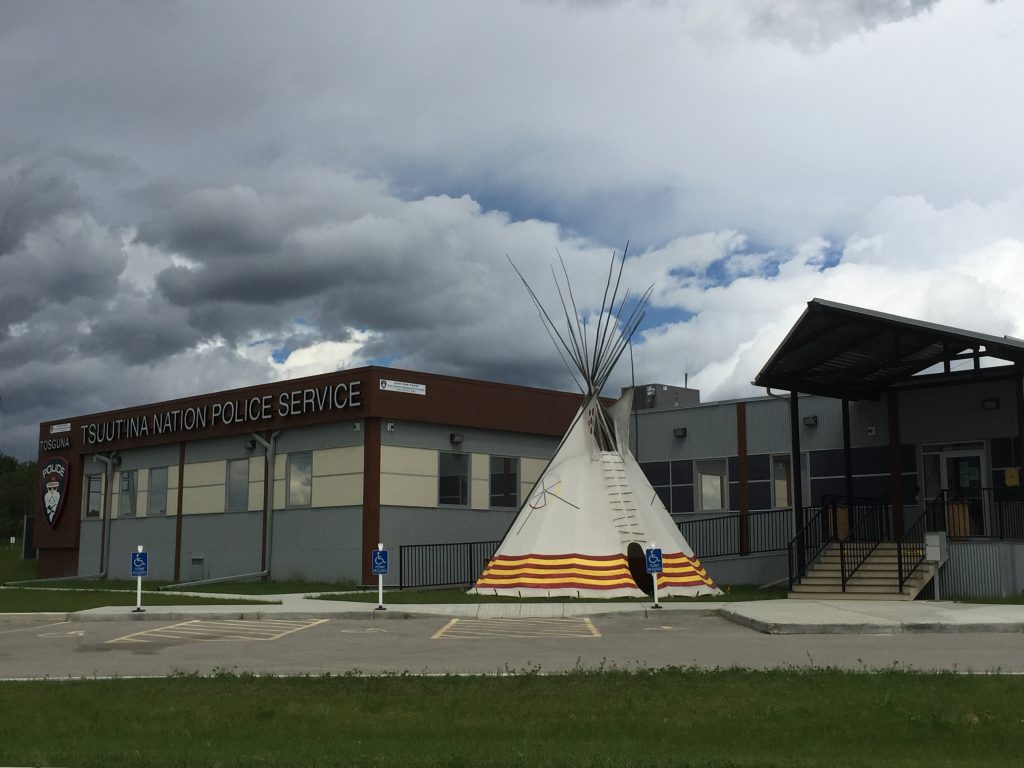
New Tosguna Building opens. Alberta Transportation officially announces the southwest leg of the Ring Road as ‘Tsuut’ina Trail’on July 11, 2017 in recognition of Tsuut’ina Nation ancestors and the hard work they put into the land; land known for significant cultural foundations, cultural identity, and spiritual connections.
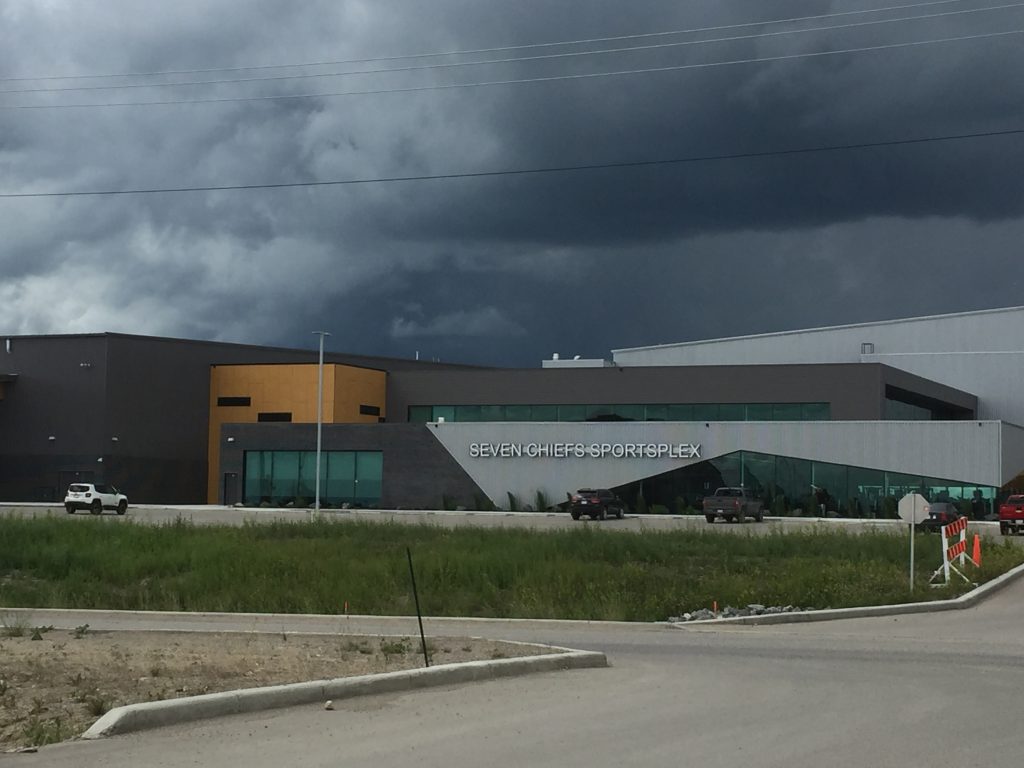
The $55.6-million Seven Chiefs Sportsplex opens, equipped with energy-efficient ice plant, a 2,000-seat hockey arena, and state-of-the-art gym.
A historic dinner series including four dinners is held on behalf of Calgary’s business, art and community leaders and is hosted by Tsuut’ina Nation’s Chief Lee Crowchild to present an intimate view of Tsuut’ina culture and share the Nation’s vision for the future. “
Roy Whitney is elected chief for his third tenure (2012-2016). The full suite of legislation is passed in relation to development approval by Chief and Council, providing commercial legislative certainty for tenants operating within the Taza development.

Costco, Taza’s first anchor tenant, opens massive new warehouse on Tsuut’ina Nation and makes headlines as the first Costco to be built on a recognized First Nation reserve in North America.
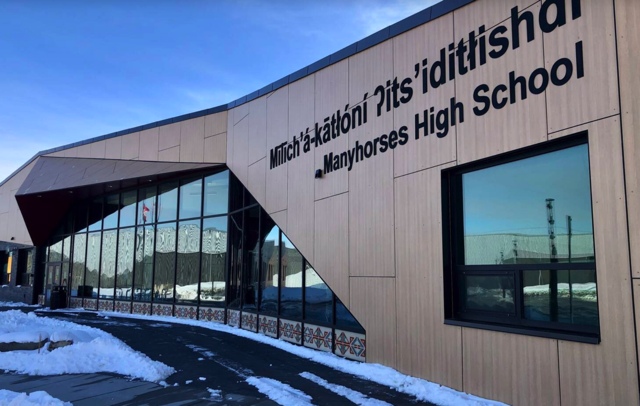
September sees the opening of the 44,735 square-foot Manyhorses Highschool, named after Hilda Manyhorses, a grandmother of the Nation.
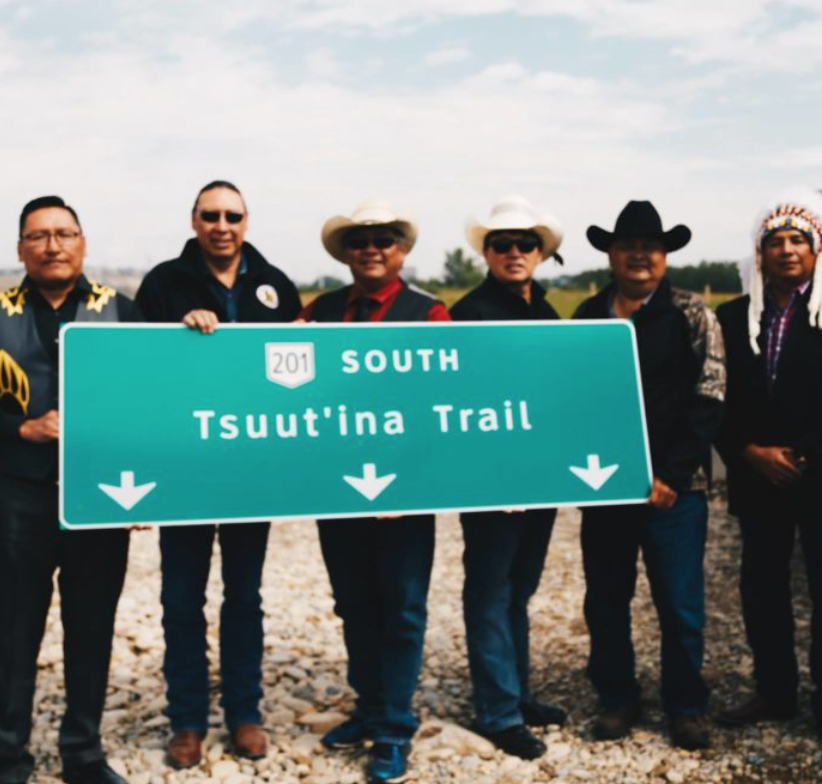
The southwest portion of the Ring Road is opened.

The first round of vibrant new businesses proceeding Costco are officially confirmed and announced to the public, at The Shops at Buffalo Run.
Tsuut’ina Nation leaders, Taza Development Corp. and members of the Calgary business community officially break ground on one of Taza’s three villages (Taza Park).
A well-attended culturally rich and celebratory ceremony is held. Officials from Tsuut’ina and Taza announce Metro Ford and Big 4 Motors are to be the first anchor tenants at Taza Park.”